Resolve to Get Rid of Your Heel Pain in 2020!
In late December and early January, more than half of Americans make at least one New Year’s Resolution. Maybe you want to learn a new skill, lose a few pounds, spend more time with friends and family.
Those can all be great choices. But if you’re one of the 25 percent of so of Americans who suffers (either currently or recurrently) from heel pain, we’d strongly encourage you to add “getting rid of your heel pain” to your resolution list.
Why Make Heel Pain a Priority?
Dealing with heel pain may not be as popular of a New Year’s Resolution as, say, losing weight or saving more money. But if you live with heel pain, you know how much of a negative impact it can have on your life. And without treatment, heel pain can lead to many future problems.
For example, heel pain can certainly lead to increased weight gain and worse health outcomes over time, since it’s much harder to exercise when your heels hurt. There can also be social and personal costs, if your heel pain prevents you from spending time out with family and friends.
So if you make dealing with your heel pain a priority, you aren’t just helping your heels feel better. You’re helping yourself become a healthier, happier individual overall—and better able to be there for others, too.
Treating Heel Pain Isn’t as Hard as You Might Think
Heel pain is the most common issue we treat at Trinity Foot Center, so we have a lot of experience helping people overcome their heel pain. We’re confident that we can help you, too!
The first step is arriving at a proper diagnosis. We must know what’s causing your heel pain to create an effective treatment plan for you. Some of the most common (but not the only) contributing causes of heel pain include:
- Wearing the wrong shoes.
- Having a structural problem with your feet.
- Walking with a biomechanically inefficient gait.
- Being overweight.
- Overuse of the heels (due to certain occupations or hobbies, overtraining, etc.)
We’ll also need to ascertain the exact type of injury you have—such as plantar fasciitis, stress fractures, a tendon tear, a pinched nerve, etc. In addition to a physical examination, we may take an X-ray (we have one in-office) to confirm the diagnosis.
Once we have that information, we can start putting together your treatment plan. Common components of many of these plans include:
- Pain relievers. Most people do well with over-the-counter anti-inflammatory medications. Some people may require a shot of cortisone to provide extra-strength pain relief for a longer period of time.
- Medical-grade inserts. These provide much more support in the arch and heel than a typical gel insert you’d buy at the pharmacy. They are great for patients who have structural issues with their feet, as well as those who work on hard surfaces like concrete for 10-12 hours per day.
- Custom orthotics. In cases where a prefabricated medical-grade insert doesn’t provide enough support—usually because of a severe structural or biomechanical issue—we can provide you with inserts that are custom made from a mold of your feet.
- Night splints. For patients with plantar fasciitis, wearing splints at night can help keep the plantar fascia elongated so that it doesn’t hurt so much when you get out of bed the next morning.
It’s possible that surgery may be required if conservative treatments aren’t effective enough on their own, but this is very rare.
Make Smart, Healthy Choices to Keep the Heel Pain Away
Understanding the root causes of your heel pain will also help you protect your heels so that the heel pain does not return in the future.
Here are a few of the most important strategies. We may suggest others at your appointment, based on your situation.
- Always wear appropriate shoes for your activities.
- Always wear the medical-grade inserts or custom orthotics that we provide for you as directed. If you are wearing your inserts and notice that heel pain is starting to come back, please give us a call. They may need to be adjusted or replaced.
- Maintain a healthy body weight and diet.
- If you’re starting a new exercise plan, take it slow at first. Your feet need time to condition themselves to new sources of stress. Increase the intensity by a little bit each week over time.
- If you work on your feet all day, consider if there are any adjustments you can make to your workstation or routine to give your feet more of a break. This might include placing a stool or anti-fatigue mat at your workstation and alternating between sitting and standing tasks.
- Stretch your feet and calves in the morning when you get up, before exercise, and multiple times throughout the day.
It may take a bit of a shift in your mindset, but with effective treatment from Trinity Foot Center and a commitment to healthy choices at home and on the job, you really can make your heel pain a thing of the past in 2020!
The first step is to make the call. You can reach Trinity Foot Center at (972) 293-9650, or make an appointment request online to have one of our staff members call you.
Contact us
Office Hours
| Monday | 8:00am - 4:30pm |
| Tuesday | 8:00am - 4:30pm |
| Wednesday | 8:00am - 4:30pm |
| Thursday | 8:00am - 5:30pm |
| Friday | 8:00am - Noon |
Contact
p. (972) 293-9650
f. (972) 291-2533
Location
1801 N. Hampton Road
Suite 340
DeSoto, TX 75115
Inside the Inwood National Bank Building on the 3rd Floor
Request appointment
© Trinity Foot Center. All Rights Reserved. | Privacy Policy
